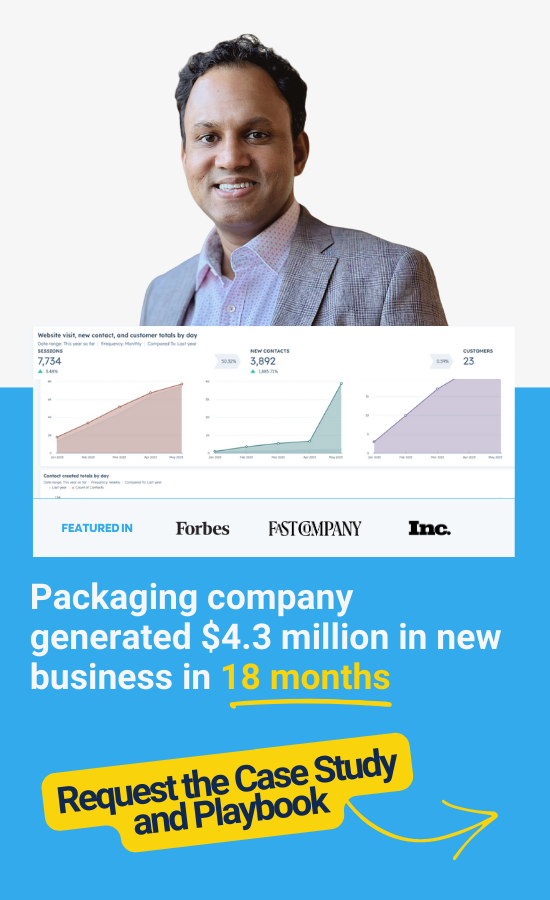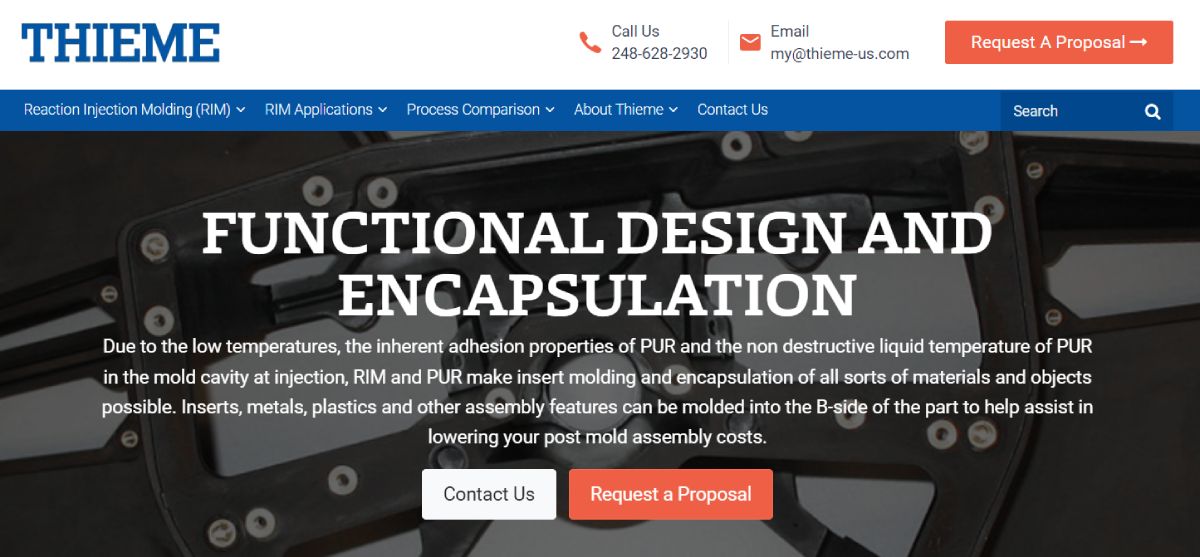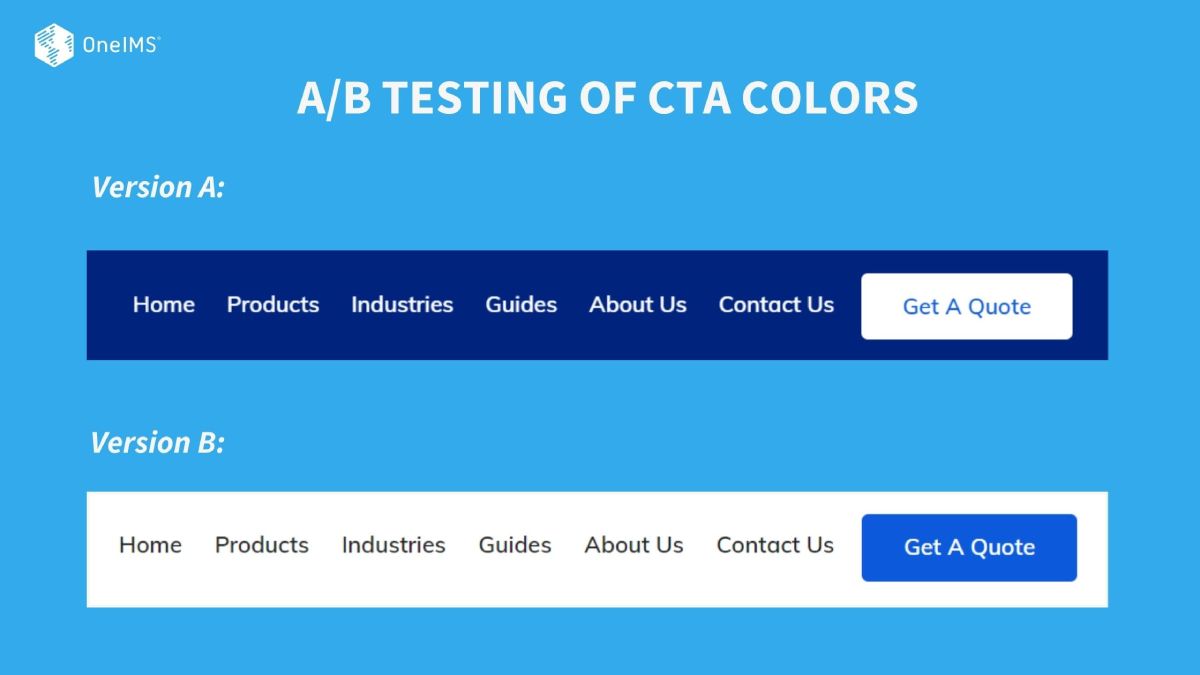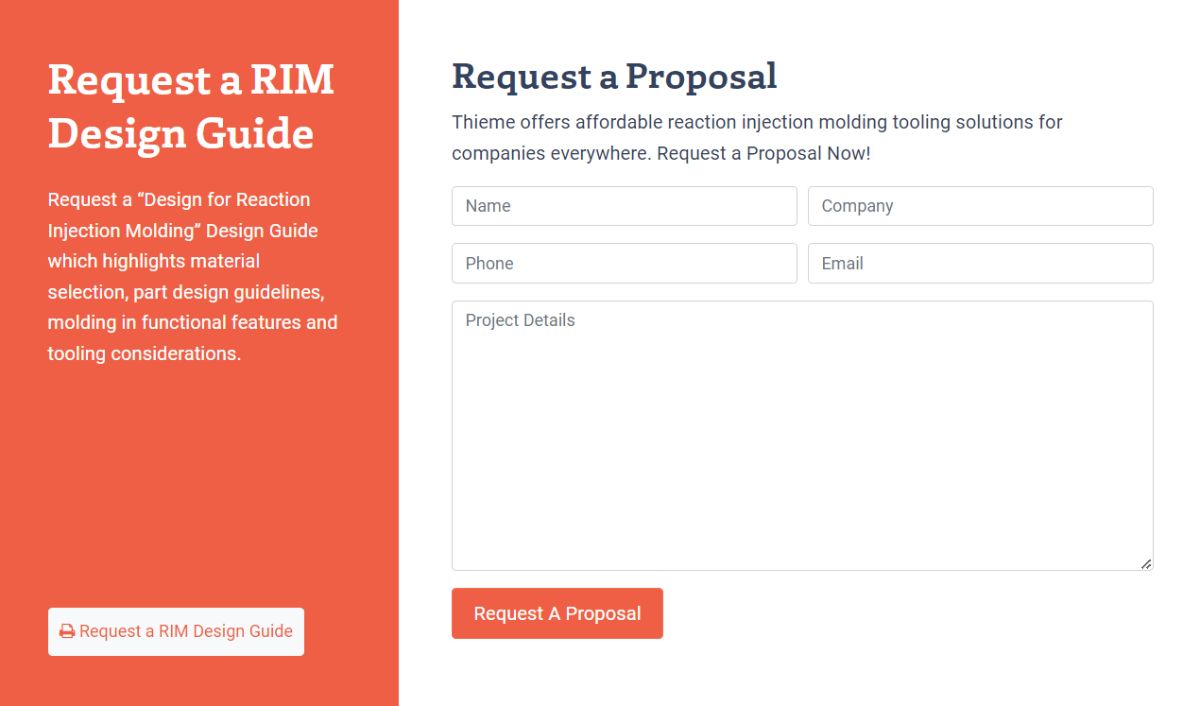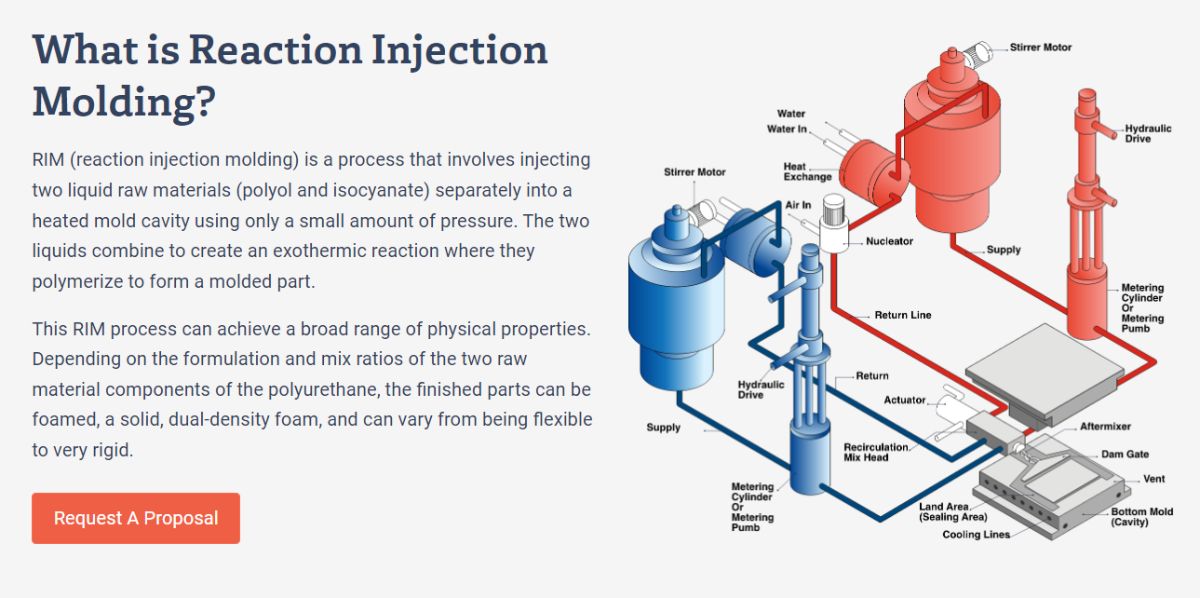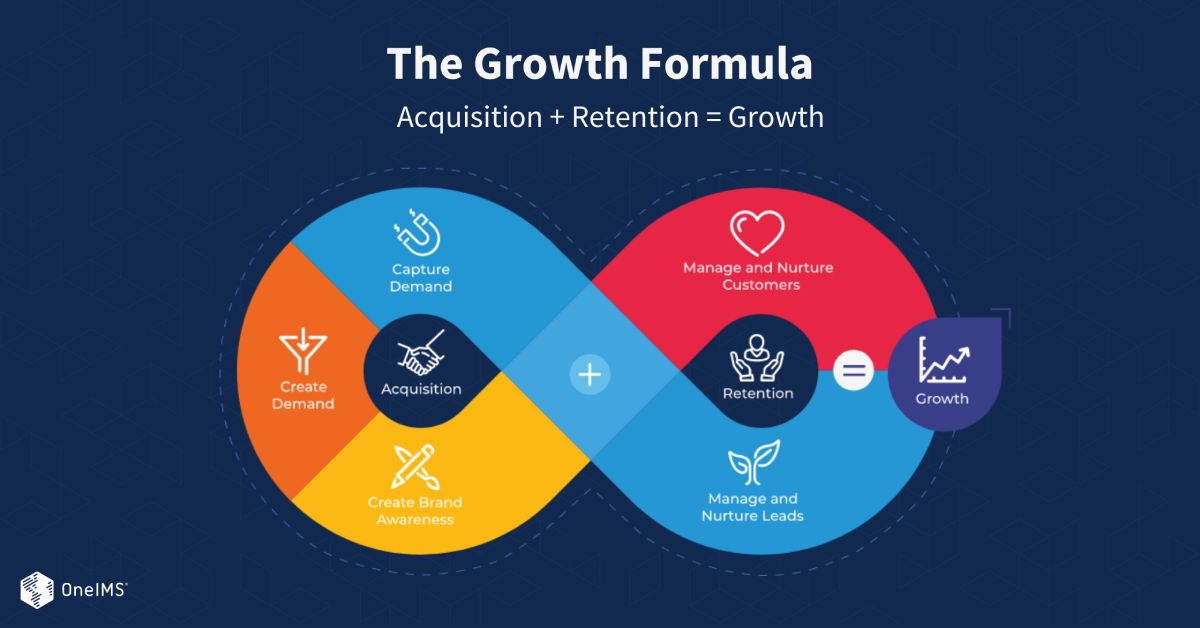Manufacturing precision is non-negotiable, but are your leads measuring up? In a digital sea, your website can’t just float. It needs to roar.
Let’s dive into the intricate world of manufacturing industry lead generation and explore how you can master your digital presence to drive business growth.
How Do You Generate Leads in the Manufacturing Industry?
Generating leads in manufacturing demands a playbook that’s as robust as your production line. Let’s dissect some battle-tested strategies that not only defy the complexities of the industry but also position your business for sustained growth.
Make CTA Stand Out
Every journey needs a guide, and your website is no exception. Strategically placed and crystal-clear calls-to-action (CTAs) will direct your visitors to take the next step, whether it’s downloading a resource, requesting a quote, or reaching out to your sales team.
Crafting calls-to-action (CTAs) is like leading your website visitors through a well-orchestrated symphony. The notes must be clear, compelling, and resonate with the desired actions. Here’s how to turn your CTAs into a persuasive melody.
Action-Oriented Language:
Your CTAs should be a beacon, guiding visitors toward their next step. Use action-oriented language that clearly communicates what you want them to do. Whether it’s “Request a Quote,” “Download Now,” or “Contact Us,” make it explicit and enticing.
Align CTAs with User Intent:
Tailor your CTAs to align with the visitor’s intent on each page. If they’re exploring products, invite them to “Explore Our Catalog.” If they’re reading a blog, encourage them to “Learn More” or “Subscribe for Updates.” The goal is to seamlessly guide them through their journey.
Strategic Placement:
The placement of your CTAs is the conductor’s wand in this symphony. Test different locations to find what works best for your audience. Common placements include at the end of blog posts, in the header, or as a floating button for easy access as visitors scroll.
Contrast for Visibility:
Your CTAs should stand out, demanding attention without being obtrusive. Utilize contrasting colors that complement your overall design. The visual contrast ensures that the CTA is noticeable, prompting action without being lost in the visual noise.
Size Matters:
Size isn’t everything, but it matters. Experiment with different CTA sizes to strike the right balance. The CTA should be prominent enough to catch the eye but not overpower the surrounding content. It should seamlessly integrate into the overall design.
A/B Testing for Optimization:
The magic happens in the details. Conduct A/B testing on different CTA placements, designs, and even wording to identify what resonates best with your audience. This data-driven approach allows you to refine your CTAs continuously.
Create Urgency and Scarcity:
The art of persuasion often involves creating a sense of urgency or scarcity. Incorporate phrases like “Limited Time Offer” or “Exclusive Access” to motivate visitors to act promptly. This psychological trigger can significantly boost conversion rates.
Personalization:
Make your CTAs feel like a tailored invitation. Consider personalizing CTAs based on user behavior or demographics. For example, if a visitor has already downloaded a resource, invite them to take the next step in the buyer’s journey.
Optimize Your Forms
Lead capture forms are your secret weapon. Keep them concise, asking for essential information. Balancing data collection with user convenience is an art—master it to ensure a steady influx of qualified leads.
How Do I Create a Lead Form for My Website?
The lead form on your website is the portal through which potential leads express interest and initiate a connection with your manufacturing prowess. To ensure this gateway is smooth and inviting, let’s explore the best practices for creating lead forms.
Define the Purpose:
Before diving into form creation, clearly define the purpose of the form. Are you gathering contact information for a newsletter, facilitating a quote request, or capturing details for a product demo? Understanding the end goal ensures that your form aligns with your specific objectives.
Smart Placement:
Much like placing tools in a workshop for easy access, strategically position your lead capture forms on key pages. Consider high-traffic areas, such as the homepage, product pages, or resource download pages. Ensure that the forms are prominently displayed without being intrusive.
Conciseness is Key:
Keep your lead forms concise and to the point. Long and cumbersome forms can create friction, deterring potential leads. Ask only for essential information that is crucial for your follow-up process. The goal is to strike a balance between gathering valuable data and respecting the user’s time.
Prioritize Essential Information:
Identify the information that is absolutely essential for initiating meaningful conversations. Typically, this includes basics such as name, email address, and perhaps the company name. Additional fields can be added strategically based on the nature of your business and the specific goals of the form.
Error Handling and Confirmation
A well-functioning tool leaves no room for errors. Implement clear error messages for any incomplete or incorrect form submissions. On successful submission, provide a confirmation message or redirect users to a thank-you page, assuring them that their information has been received.
Create Effective Landing Pages
Think of landing pages as the red carpet for your campaigns or products. Create dedicated pages that align seamlessly with your promotional efforts. Consistency from ad to landing page is the key to conversion success.
Laser-Focused Content:
When crafting a dedicated landing page, think precision. Your audience has arrived seeking specific information, so provide it with utmost clarity. Utilize compelling headlines that not only capture attention but also succinctly convey the unique value of the product or service.
Visual Appeal:
A picture is worth a thousand words, and in manufacturing, visuals speak volumes. Integrate high-quality images or videos that showcase your products in action. Visual appeal not only captures attention but also helps your audience visualize the tangible benefits of what you offer.
Benefits Over Features:
While it’s important to highlight features, emphasize the benefits. Your audience is not just looking for a product; they’re seeking a solution to their challenges. Clearly outline how your offering makes their lives easier, more efficient, or more profitable.
User-Friendly Design with Conversion in Mind
In the vast landscape of manufacturing marketing, your website’s design is the compass guiding visitors through a seamless journey. Let’s break down the principles that make user-friendly design not just a preference but a necessity for success.
Clean and Intuitive Design:
Think of your website as a well-organized factory floor. A clean and intuitive design ensures that visitors can navigate effortlessly. Avoid clutter, prioritize essential elements, and maintain a visual hierarchy that guides users through the information flow.
Mobile Responsiveness:
The manufacturing industry is always on the move, and so is your audience. Optimize your website for mobile responsiveness to cater to professionals who are accessing information on the go. A mobile-friendly design ensures that your content is easily accessible and retains its visual appeal across various devices.
Imagine a well-lit path through a factory – that’s what your navigation should emulate. Create a clear menu structure that categorizes information logically. Make it easy for visitors to find what they’re looking for, whether it’s product details, industry insights, or contact information.
Speedy Information Retrieval:
In manufacturing, time is money. The same holds true for your website. Help visitors find information quickly to prevent bounce rates. Implement a robust search functionality, organize content logically, and use clear labels to guide users effortlessly to the information they seek.
Consistency Across Pages:
Consistency is the glue that holds your digital factory together. Maintain a consistent design theme and layout across all pages. This not only enhances brand identity but also creates a sense of familiarity for visitors navigating through different sections of your website.
Interactive Elements:
Spice up your design with interactive elements that engage visitors. From intuitive hover effects to clickable icons, these elements not only enhance the user experience but also make your website more memorable and enjoyable to explore.
Accessibility:
Your digital factory should be accessible to everyone. Ensure that your design accommodates individuals with varying needs, including those with disabilities. This not only broadens your audience reach but also aligns with ethical and inclusive business practices.
How Many Leads Should a Website Generate?
While there’s no magic number applicable to all, a rule of thumb for manufacturing websites is a 2.1% conversion rate for bottom-of-funnel sales. However, this figure is influenced by factors like website traffic, lead quality, and the effectiveness of your conversion optimization strategies.
How to Generate Leads from a Website Organically
Organic lead generation relies heavily on strategic SEO and compelling content marketing. Here’s how to cultivate leads naturally through these key strategies:
Keyword Research:
Identify key terms relevant to your manufacturing offerings, aligning with your audience’s search language.
On-Page Optimization:
Fine-tune pages with strategic keyword placement for a well-structured, readable layout, improving search engine indexing.
Off-Page Optimization:
Expand your strategy with quality backlinks, social media engagement, and forum participation to boost your website’s authority and trustworthiness.
Quality Content:
Craft relevant, high-quality content addressing audience pain points. Regular updates signal ongoing value to search engines.
Lead Generation for Manufacturing: Website Examples
This is the actual case from our practice.
Our client, a metal finishing company, faced a conversion roadblock with their “Request a Quote” form. The demand for blueprints and extensive technical details deterred potential prospects, limiting conversions.
Our Solution:
Simplified CTAs:
- Request Quote: Streamlined for those ready to delve into specifics.
- Talk to Engineers: Connected prospects with technical experts for immediate answers.
- Request Sample: Introduced hands-on engagement, allowing customers to send in parts for a polished sample.
Form Optimization:
- Removed unnecessary form fields.
- Increased conversions on the “Talk to Engineers” form, paving the way for smoother interactions.
Results:
- Early Conversions: Prospects engaged earlier, building trust before entering the quote process.
- Streamlined Process: The simplified journey led to increased conversions.
- Tangible Connection: Offering polished samples boosted overall sales conversion, turning parts into future production blueprints.
In a competitive market, our client transformed from a service provider to a collaborative partner, setting them apart in the customer’s creative journey. Strategic CTAs and a streamlined process not only boosted conversions but positioned our client as the preferred choice.
Closing the Loop with Our Growth Formula Framework
Although website optimization is essential for lead generation in the manufacturing industry, there’s much more to your growth.
At OneIMS, we’ve distilled all our insights into a powerful Growth Formula Framework, designed to propel manufacturers toward success.
By aligning marketing campaigns with our proven strategies, we maximize customer acquisition and retention, fostering sustainable growth.
Ready to see the impact? Dive into our successful case study showcasing how this framework transformed a packaging company’s digital journey.
Read it now and discover the path to digital excellence.
